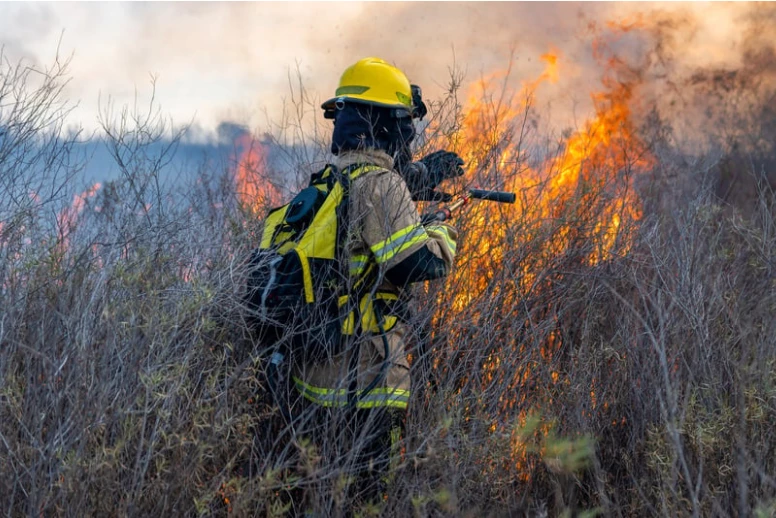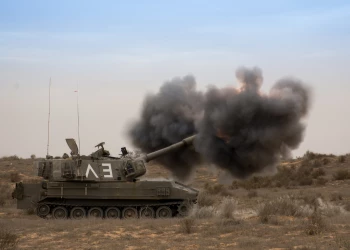Overcoming the "Heavy" Price of More Armor: Interim Solutions for Tank and Fighting Vehicle Vulnerabilities
Add bookmarkBy John M. Doyle
After focusing on counterinsurgency and asymmetric warfare in the Middle East, Africa and Southwest Asia for nearly two decades, the U.S. military is changing the way it will fight in the next 30 years. The rise of China as a global competitor and Russia’s increasing belligerence in the regions around the Baltic and Black seas, have U.S. military planners – especially in the Army -- rethinking their procurement needs, including what kind of armored ground combat vehicles will be needed.
“Russia and China continue to assert themselves in an effort to gain dominance in key regions and are developing advanced weapons to achieve parity both strategically and in close combat,” Army Secretary Mark Esper told a Senate appropriations panel in May. The potential threat was on full display in mid-September when Russia conducted its largest military exercise since the Cold War in Eastern Siberia. The week-long Vostok 2018 maneuvers, involved not only 300,000 Russian personnel, but 3,200 Chinese troops and 36,000 tanks and other armored ground vehicles.
The bulk of U.S. Army and ground combat vehicles, like the M1Abrams battle tank and the M2 Bradley fighting vehicle, date back to the 1970s and 1980s. A new generation of future combat vehicles, both manned and unmanned, is planned to replace the current fleet of infantry fighting vehicles, and later tanks, but the arrival of prototypes aren’t planned until Fiscal Year 2021, Army Chief of Staff Gen. Mark A. Milley told Senate appropriators.
Meanwhile, improvements in armor-piercing offensive technologies present another challenge to protecting the occupants of armored vehicles. Unlike in the past, adding more armor to counter more lethal weapons, is no longer feasible because it comes at too “heavy” a price. The added weight--sometimes several tons--slows the vehicle down, makes it less maneuverable and complicates logistics from transportation to maintenance and repair.
Future conflicts in former Soviet-controlled Eastern Europe or the megacities of Asia and Africa pose operational challenges with streets, tunnels and bridges too narrow or weak for heavy equipment like the 70-ton Abrams. A July report by the Center for European Policy Analysis found that bridges in Eastern Europe, particularly in the vulnerable Baltic States “are not necessarily prepared for heavy vehicles.”
Instead, the Defense Department is looking at lightweight, off-the-shelf solutions utilizing active or passive technology. Active protection systems, or APS, use physical countermeasures, such as blast or projectiles that destroy or limit the impact of incoming fire.
The Army evaluated three different APS technologies for the Abrams tank, Bradley fighting vehicle and Stryker combat vehicle, two Israeli-made and one American. In February, officials announced the Army would buy Rafael’s Trophy active protection system, for more than 250 of the main battle tanks. Currently deployed with the Israeli Defense Force, Trophy is the only battle-tested APS in the Western world, although Russia has had success with its own APS in Ukraine. Trophy maintains a ring of radar around the vehicle to detect threats in all directions. Once the system detects an incoming weapon, Trophy tracks it, determines its trajectory and destroys it with a blast of metal pellets like a shotgun. Although it does add an extra 1,800 pounds, Trophy is considered a relatively slight extra load for a tank that already weighs 70 tons.
The Iron Fist system by IMI, another Israeli company, is still being evaluated for the Bradley, which is considered the most challenging vehicle for initial realistic testing of an APS system. There are already several sensor and weapons systems on the Bradley’s roof, all of them competing for power and bandwidth. In late August, Army officials halted tests for Iron Curtain, the one U.S.-made system, on the wheeled-Stryker combat vehicle. Made by Herndon, Va.-based Artis, Iron Curtain was deemed not mature enough a system. The Army, focusing on off-the-shelf systems, plans to see more potential replacements at an event in November. Among the expected defense contractors vying to place their APS on the Stryker, is Germany’s Rheinmetal.
There are also “passive” solutions of specialized armor plating that use composite materials to simply deflect or absorbs blasts and projectiles, like the EAAK (Enhanced Applique Armor Kit), developed by Rafael and installed on the U.S. Marine Corps’ ageing Assault Amphibious Vehicles. Baseline protection was increased through a shaped-steel external armor fitting. However, that forced modifications to the engine and suspension system to counter the weight gains of the EAAK installation.
One promising composite solution is metal foam, literally metal with sponge-like holes or air pockets, that combines strength, thermal shielding and both ballistic and thermal radiation detection. Developed by researchers at North Carolina State University and the Army Aviation Applied Technology Directorate, composite metal foam, or CMF, “offers much more protection than all other existing armor materials while lowering the weight remarkably,” according to Afsaneh Rabiei, senior author of the paper on CMF’s benefits. “We can provide as much protection as existing steel armor at a fraction of the weight – or provide much more protection at the same weight,” added Rabiei, who is also a professor of mechanical and aerospace engineering at N.C. State. Stainless steel CMF panels were able to block blast pressure and fragmentation at 5,000 feet per second from high explosive incendiary rounds that detonated only 18 inches away.
Sources:
- https://www.appropriations.senate.gov/hearings/review-of-the-fy2019-budget-request-for-the-us-army
- https://www.appropriations.senate.gov/hearings/review-of-the-fy2019-budget-request-for-the-us-dept-of-defense
- https://esa.un.org/unpd/wup/
- https://www.cepa.org/securing-the-suwalki-corridor
- https://news.ncsu.edu/2018/03/metal-foam-he-rounds-2018/
- https://esa.un.org/unpd/wup/
- https://www.cepa.org/securing-the-suwalki-corridor
- https://www.appropriations.senate.gov/hearings/review-of-the-fy2019-budget-request-for-the-us-army
- https://news.ncsu.edu/2018/03/metal-foam-he-rounds-2018/























